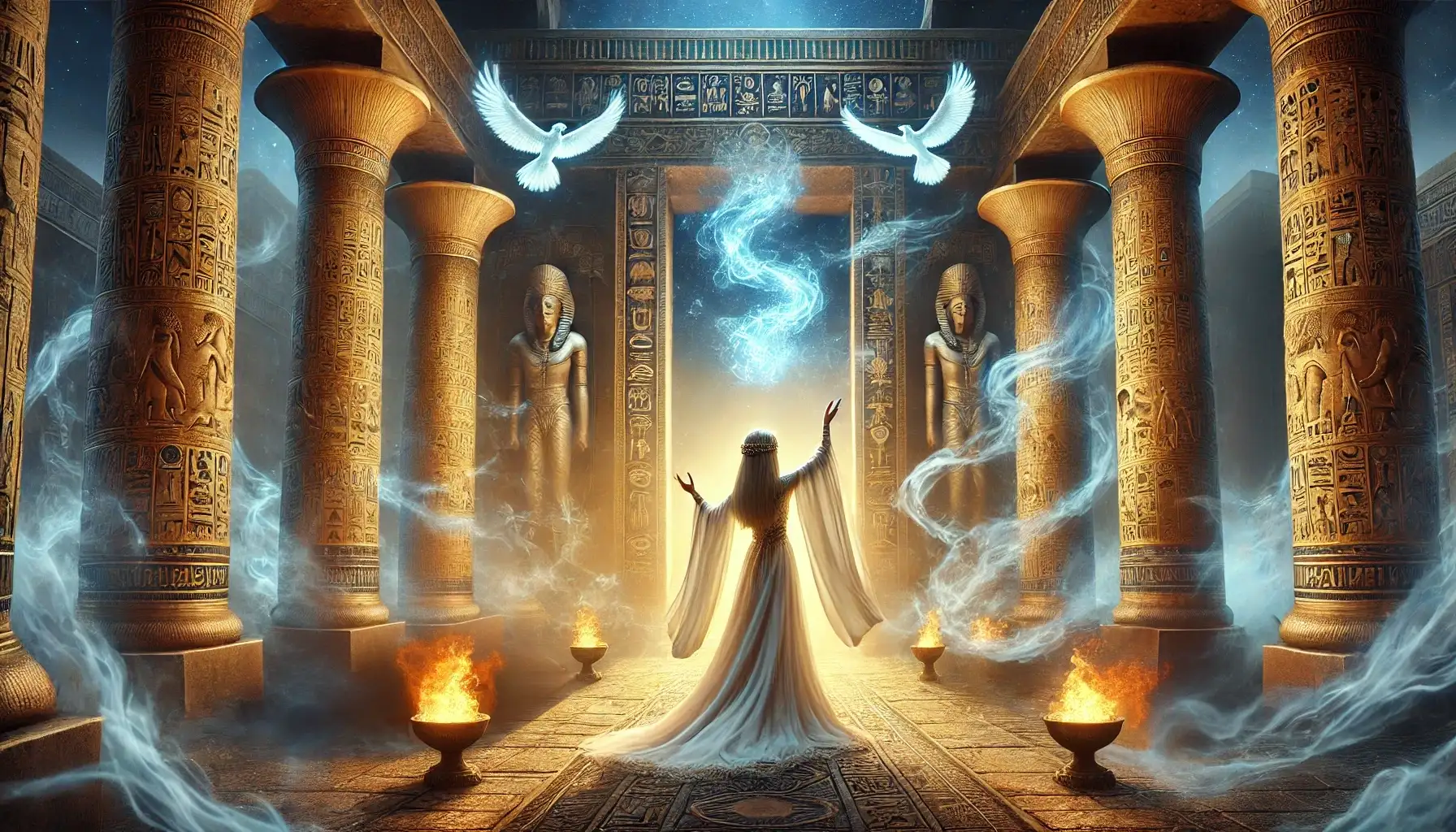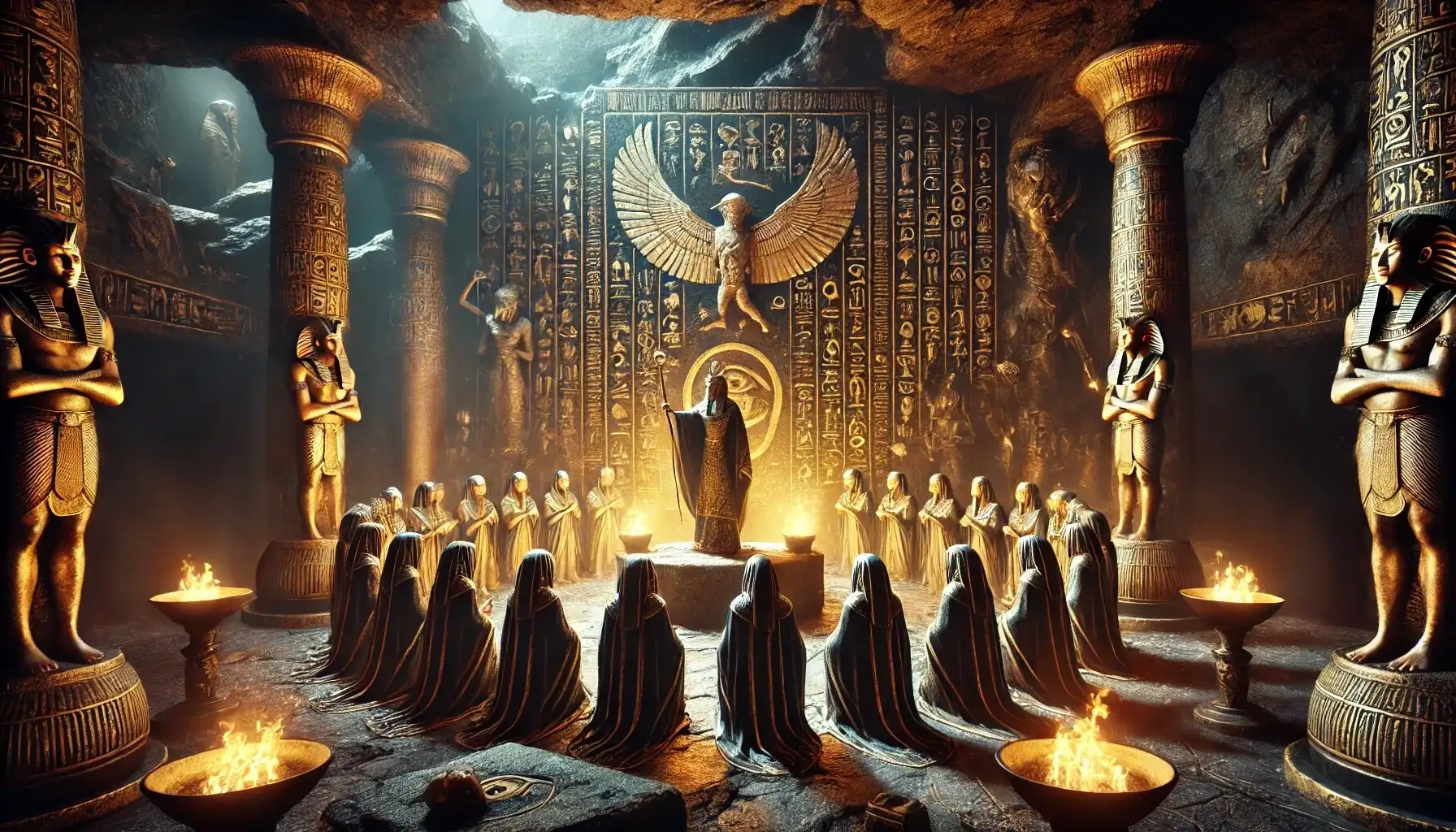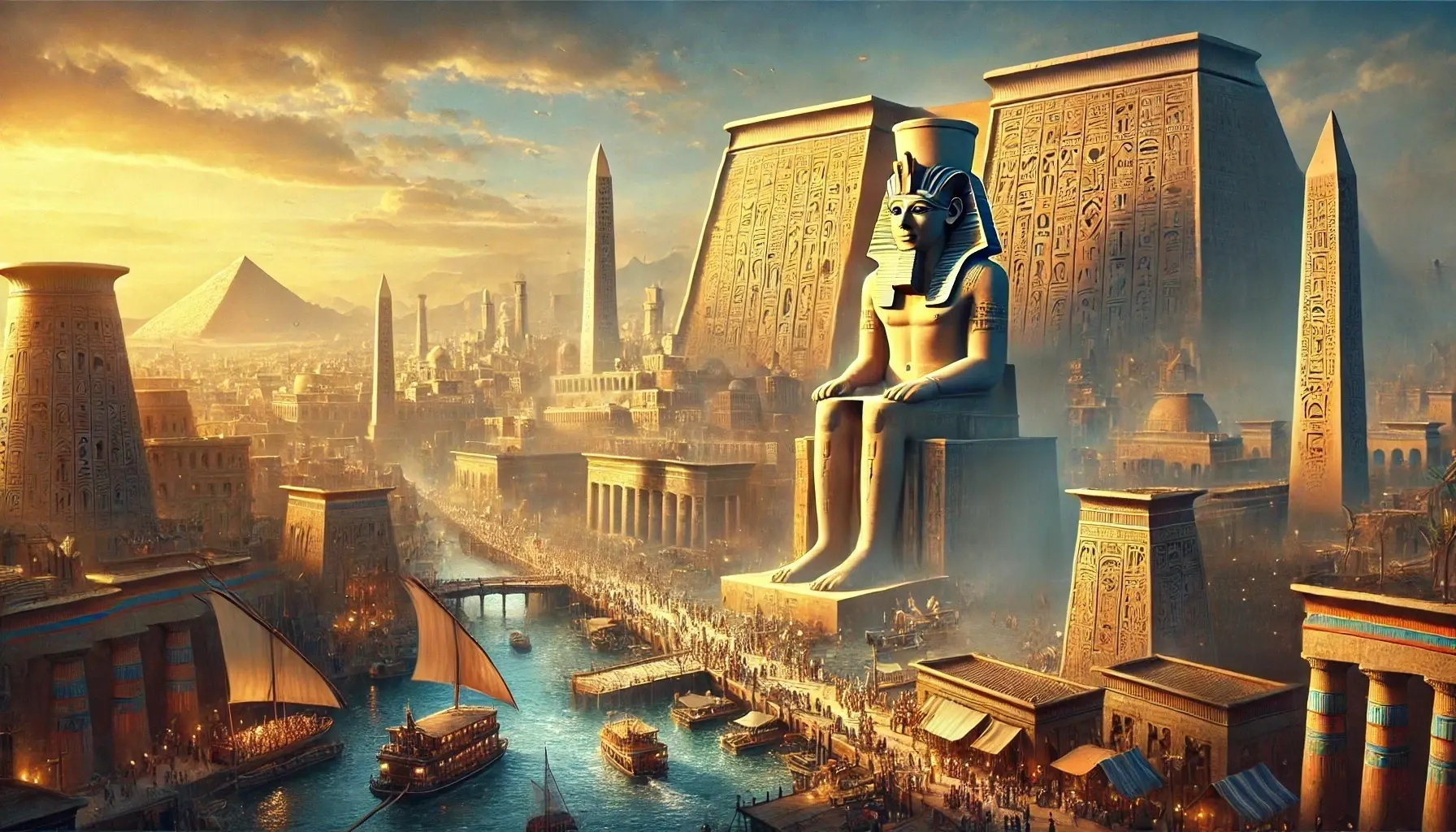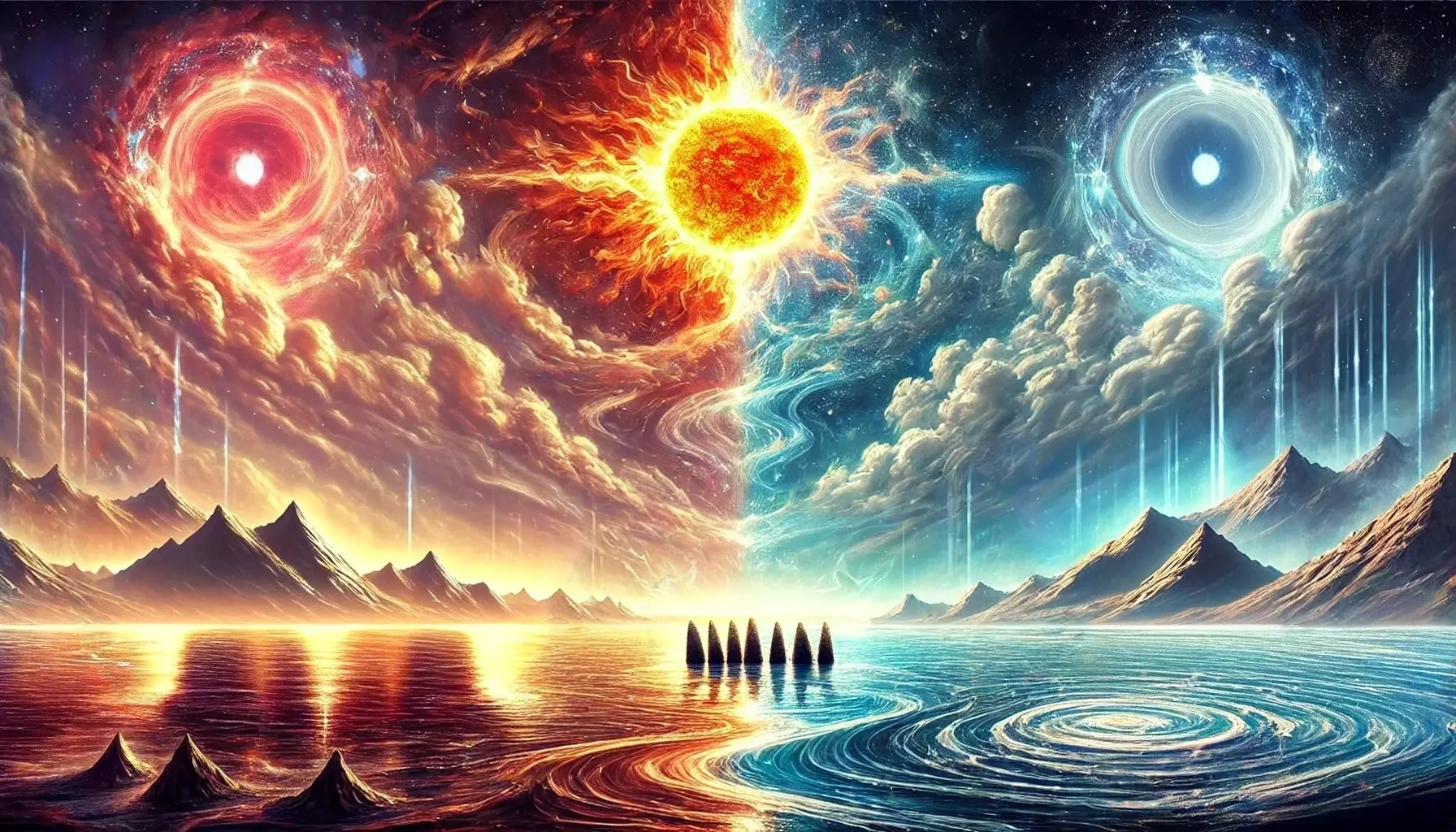The Divine and the Mundane: Magic in Ancient Egypt
In the golden sands of ancient Egypt, where the Nile’s life-giving waters met the endless desert, magic was not merely a practice—it was a way of life. To the Egyptians, heka—the force of magic—was as real as the air they breathed, a divine energy woven into the fabric of existence. It was the power that animated the gods, protected the living, and guided the dead. Magic was not the domain of a select few; it permeated every aspect of society, from the pharaoh’s court to the humblest farmer’s hut.
The Egyptians believed that heka was a gift from the gods, bestowed upon humanity to maintain cosmic order, or ma’at. Without it, chaos would reign. Magic was both a shield and a weapon, a means of healing and harming, of communing with the divine and controlling the natural world. It was as much a science as it was an art, governed by precise rituals and incantations that had been honed over millennia.
The Gods of Magic: Heka and the Pantheon
At the heart of Egyptian magic stood Heka, the personification of magical power. Often depicted as a man holding two entwined serpents, Heka was both a deity and a force. He was the son of Khnum, the creator god, and Menhit, the lioness goddess of war. Together, they formed a trinity of creation, protection, and transformation.
But Heka was not alone in his dominion over magic. Thoth, the ibis-headed god of wisdom and writing, was also a master of the arcane. It was said that he authored the Book of Thoth, a legendary text containing the secrets of the universe. Isis, the great mother goddess, was renowned for her magical prowess, using her knowledge to resurrect her husband Osiris and protect her son Horus. Even Ra, the sun god, relied on magic to navigate the perilous journey through the underworld each night.
These deities were not distant figures; they were active participants in the lives of their worshippers. Through rituals and offerings, the Egyptians sought to harness their power, invoking their names in spells and prayers.
The Tools of the Trade: Rituals, Spells, and Amulets
Magic in ancient Egypt was a meticulous craft, requiring both knowledge and skill. It was not enough to simply utter a spell; one had to perform the correct actions, use the right materials, and adhere to the proper timing.
The Power of Words: Spells and Incantations
Words were the lifeblood of Egyptian magic. The spoken word was believed to have creative power, capable of shaping reality. Spells, or hekau, were often recited in a rhythmic, poetic manner, their cadence designed to resonate with the divine. These incantations were recorded on papyri, temple walls, and even everyday objects, ensuring their preservation for future generations.
One of the most famous collections of spells is the Book of the Dead, a guide for the deceased navigating the afterlife. Its verses were meant to protect the soul from demons, open the gates of the underworld, and secure a favorable judgment before Osiris. But magic was not confined to the realm of the dead. Spells were used to heal the sick, protect against curses, and even ensure a good harvest.
Amulets and Talismans: Magic in Miniature
Amulets were another essential tool in the Egyptian magician’s arsenal. These small objects, often made of stone, metal, or faience, were imbued with protective or empowering properties. The ankh, symbolizing life, and the djed pillar, representing stability, were among the most popular. The Eye of Horus, or wedjat, was believed to ward off evil and restore health.
Amulets were worn by the living and placed on the bodies of the dead. They were not mere ornaments; they were conduits of divine energy, charged with the power of the gods.
Rituals: Bridging the Human and the Divine
Rituals were the backbone of Egyptian magic, serving as a bridge between the human and the divine. These ceremonies were often elaborate, involving offerings, purification, and the recitation of spells. Priests, who were also magicians, played a central role in these rites, acting as intermediaries between the people and the gods.
One of the most important rituals was the Opening of the Mouth, performed to restore the senses of the deceased and ensure their ability to eat, drink, and speak in the afterlife. This ceremony involved touching the mouth of the mummy with a sacred adze, a tool associated with the god Ptah.
The Dark Side of Magic: Curses and Counter-Curses
While Egyptian magic was often used for benevolent purposes, it could also be a weapon. Curses were a common feature of Egyptian life, employed to punish enemies, protect tombs, and settle scores. The most famous examples are the curses inscribed on the walls of tombs, warning intruders of dire consequences.
But curses were not limited to the dead. Love spells, often involving figurines or written petitions, were used to manipulate the emotions of others. Binding spells, inscribed on pottery or lead tablets, sought to restrain an adversary’s actions.
To counter these malevolent forces, the Egyptians developed a range of protective measures. Amulets, spells, and rituals were used to deflect curses and neutralize their effects. The practice of magic was thus a constant balancing act, a struggle to maintain harmony in a world fraught with danger.
The Legacy of Egyptian Magic: Echoes in the Modern World
Though the temples of ancient Egypt have crumbled and the names of its gods have faded from memory, the legacy of its magic endures. The principles of heka—the interplay of words, actions, and materials—can be seen in modern magical traditions, from Wicca to ceremonial magic. The fascination with amulets, spells, and divination speaks to a timeless human desire to control the unseen forces that shape our lives.
In literature and popular culture, Egyptian magic continues to captivate the imagination. From the tales of Isis and Osiris to the adventures of modern-day archaeologists, the mystique of ancient Egypt remains as potent as ever.
Conclusion: The Eternal Spell of Egypt
Egyptian magic was more than a collection of rituals and spells; it was a worldview, a way of understanding the universe and humanity’s place within it. It was a testament to the ingenuity and creativity of a civilization that sought to harness the divine, to bend the forces of nature to its will.
Today, as we gaze upon the relics of this ancient world—the hieroglyphs, the amulets, the mummies—we are reminded of the enduring power of magic. It is a power that transcends time and space, a spell that continues to enchant us, drawing us into the mysteries of the past.
In the words of the ancient Egyptians themselves: “Magic is the art of creating change in accordance with the will.” And in their art, their rituals, and their beliefs, we find a will that has shaped the course of history, leaving an indelible mark on the human spirit.



